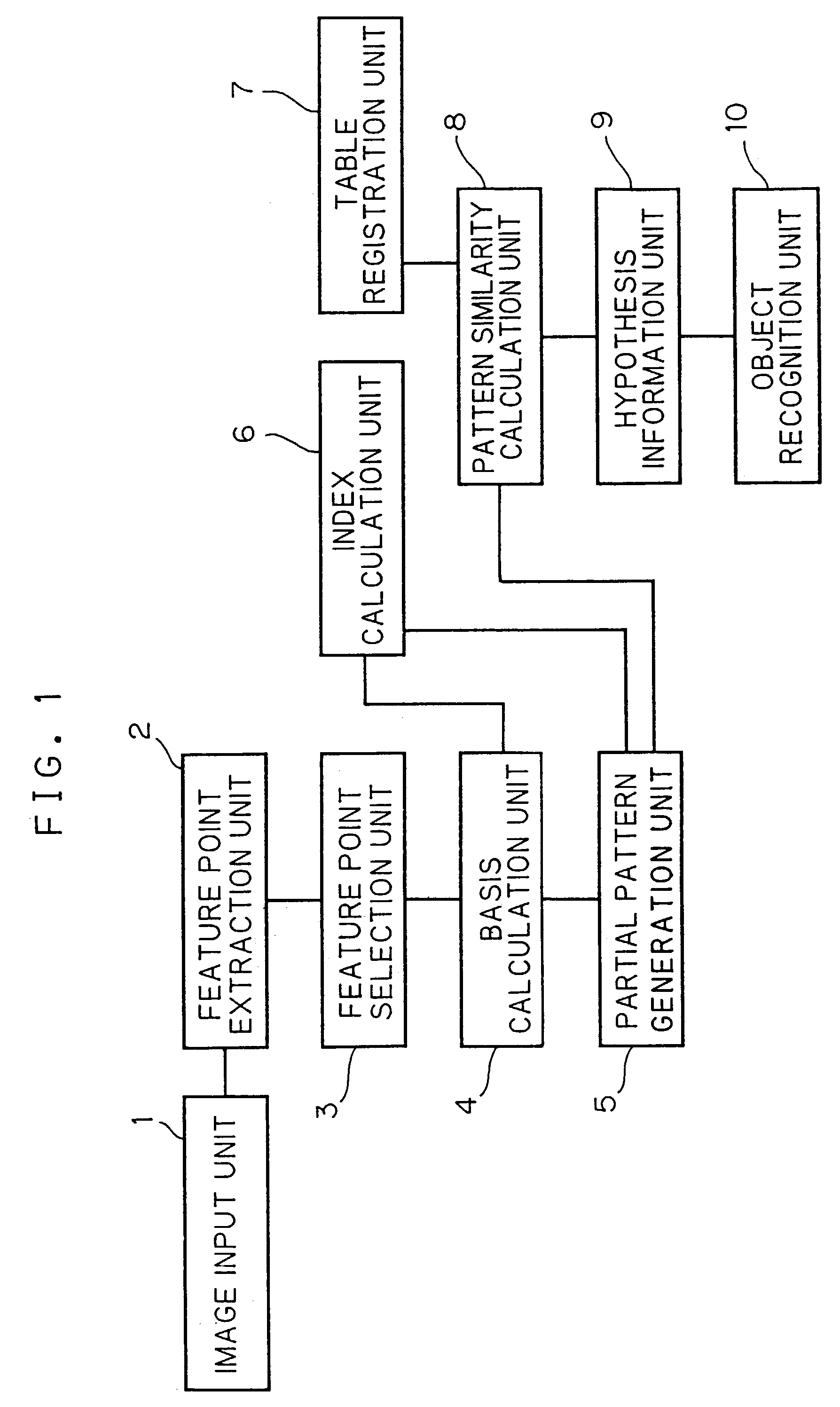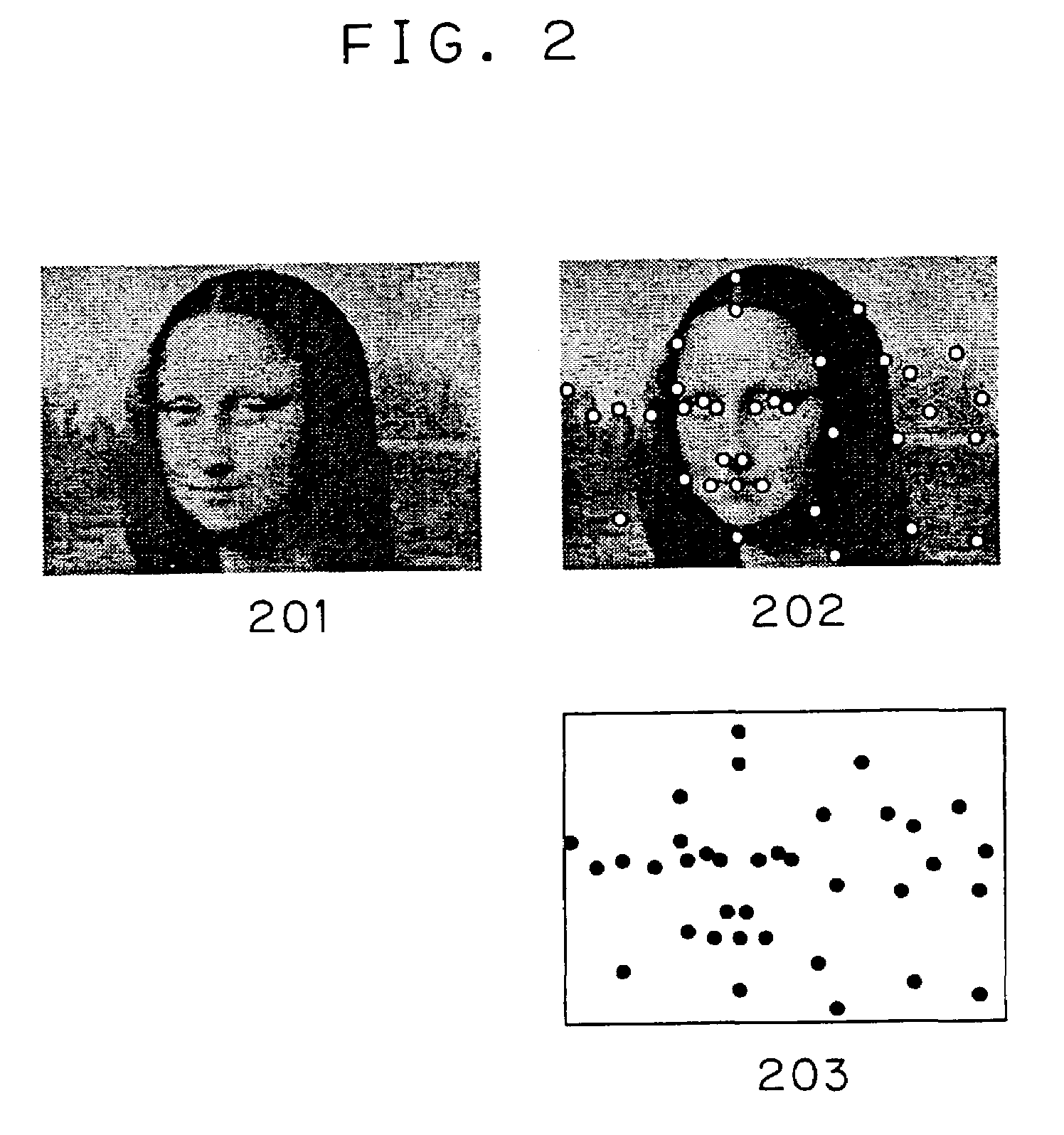Pattern recognition apparatus and method using distributed model representation of partial images
- Summary
- Abstract
- Description
- Claims
- Application Information
AI Technical Summary
Benefits of technology
Problems solved by technology
Method used
Image
Examples
first embodiment
[0035]Hereinafter, a pattern recognition apparatus according to a first embodiment of the present invention will be described with reference to the drawings.
[0036]This embodiment is a method for detecting the position and orientation of an object of interest from a certain image. An object for recognition object may be of any kind. In the present embodiment, a case will be described in which the object is a rectangular-parallelepiped box having a pattern, which is a letter “A” appearing on its one side, as shown in FIG. 4-401.
[0037]In this embodiment, an image obtained by capturing this box at an arbitrary position and an arbitrary orientation is used as one model; and images of the box at various positions and orientations are registered as multiple models.
[0038]Then, which model is similar to a detection object image which captured the same box is judged; and the position and orientation of the box of the detection object image are recognized.
[0039]Thus, the following description ...
second embodiment
[0148]A second embodiment will now be described with reference to FIGS. 9 and 10.
[0149]In the second embodiment, a detection method which uses a pattern obtained by taking out an image of a global region in addition to a partial image will be described.
(1) Recognition Method Using Global Image for Face Region Detection
[0150]FIG. 9 shows various data in the recognition method using a global image for face region detection.
[0151]FIG. 9-901 shows an image including a face. Three feature points (nostrils and one lip corner) are selected as interest points; and a rectangle representing a region of a global image (whole face) is shown.
[0152]FIG. 9-902 shows a basis formed by the three points. The angle between vectors and the ratio between the lengths of the vectors are used as indexes of a hash table.
[0153]FIG. 9-903 shows an intensity change pattern on the neighboring region taken out in accordance with the basis formed by the three points.
[0154]In addition, an intensity change pattern ...
third embodiment
[0163]A third embodiment will now be described.
[0164]In the third embodiment, identification of a recognition object is carried out.
[0165]If the orientation of a recognition object is prescribed to a certain extent, it is possible to identify the recognition object based on a model representation approach using a similar hash table.
[0166]For example, as shown in FIG. 11, feature extraction (FIG. 11-1103, 1104) is carried out with respect to an object A (FIG. 11-1101) and an object B (FIG. 11-1102); and partial patterns are taken out based on all the combinations of feature points and registered to a hash table. In this case, the names of the objects are also registered for “Label” in the registration stage (FIG. 11-1105).
[0167]In recognition stage, the foregoing similar procedures are followed and the names of the objects including voted feature points are outputted. Thus, identification of the recognition object is made possible, that is, what object exists can be known.
[0168]For e...
PUM
 Login to View More
Login to View More Abstract
Description
Claims
Application Information
 Login to View More
Login to View More - R&D
- Intellectual Property
- Life Sciences
- Materials
- Tech Scout
- Unparalleled Data Quality
- Higher Quality Content
- 60% Fewer Hallucinations
Browse by: Latest US Patents, China's latest patents, Technical Efficacy Thesaurus, Application Domain, Technology Topic, Popular Technical Reports.
© 2025 PatSnap. All rights reserved.Legal|Privacy policy|Modern Slavery Act Transparency Statement|Sitemap|About US| Contact US: help@patsnap.com



